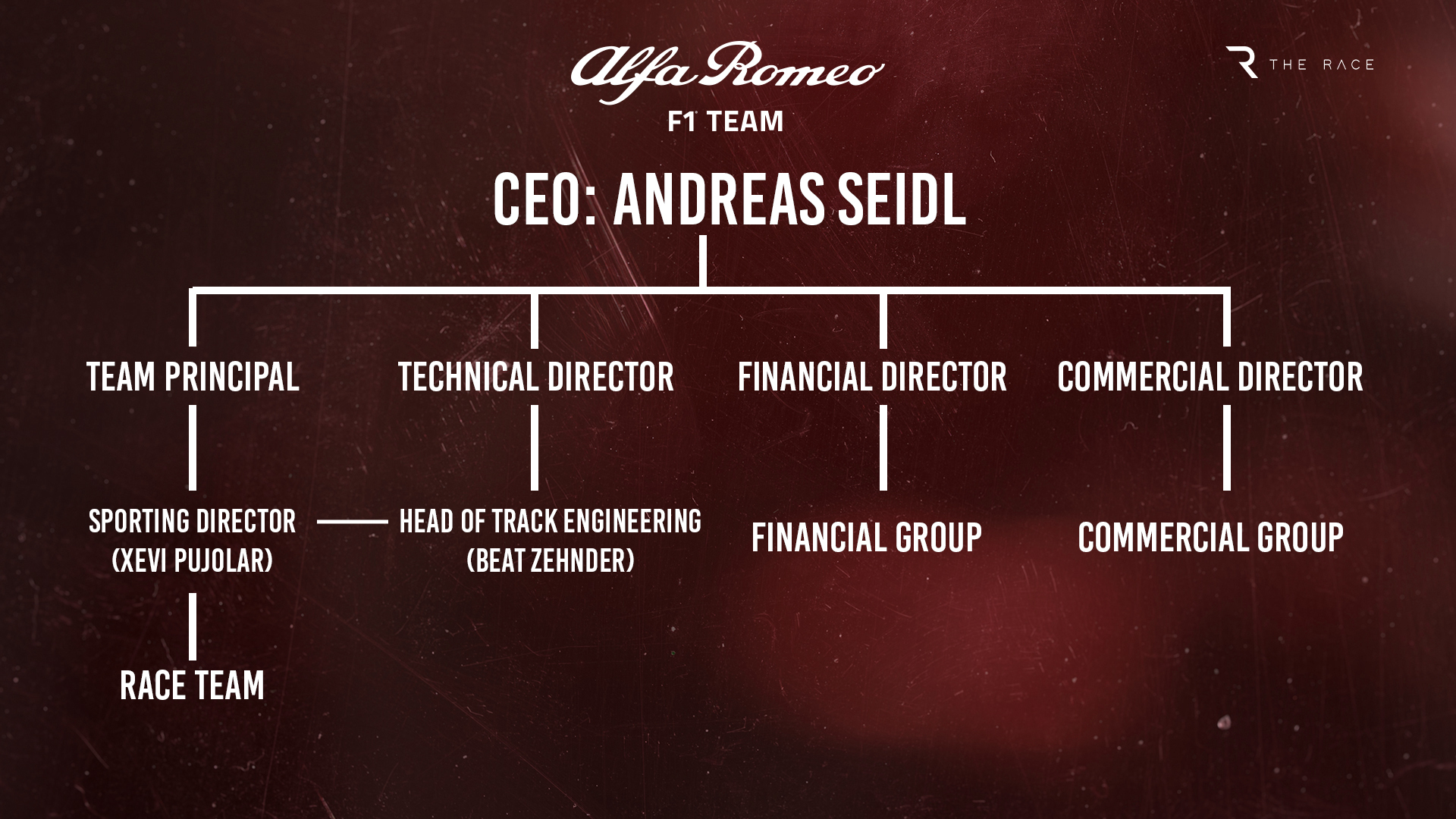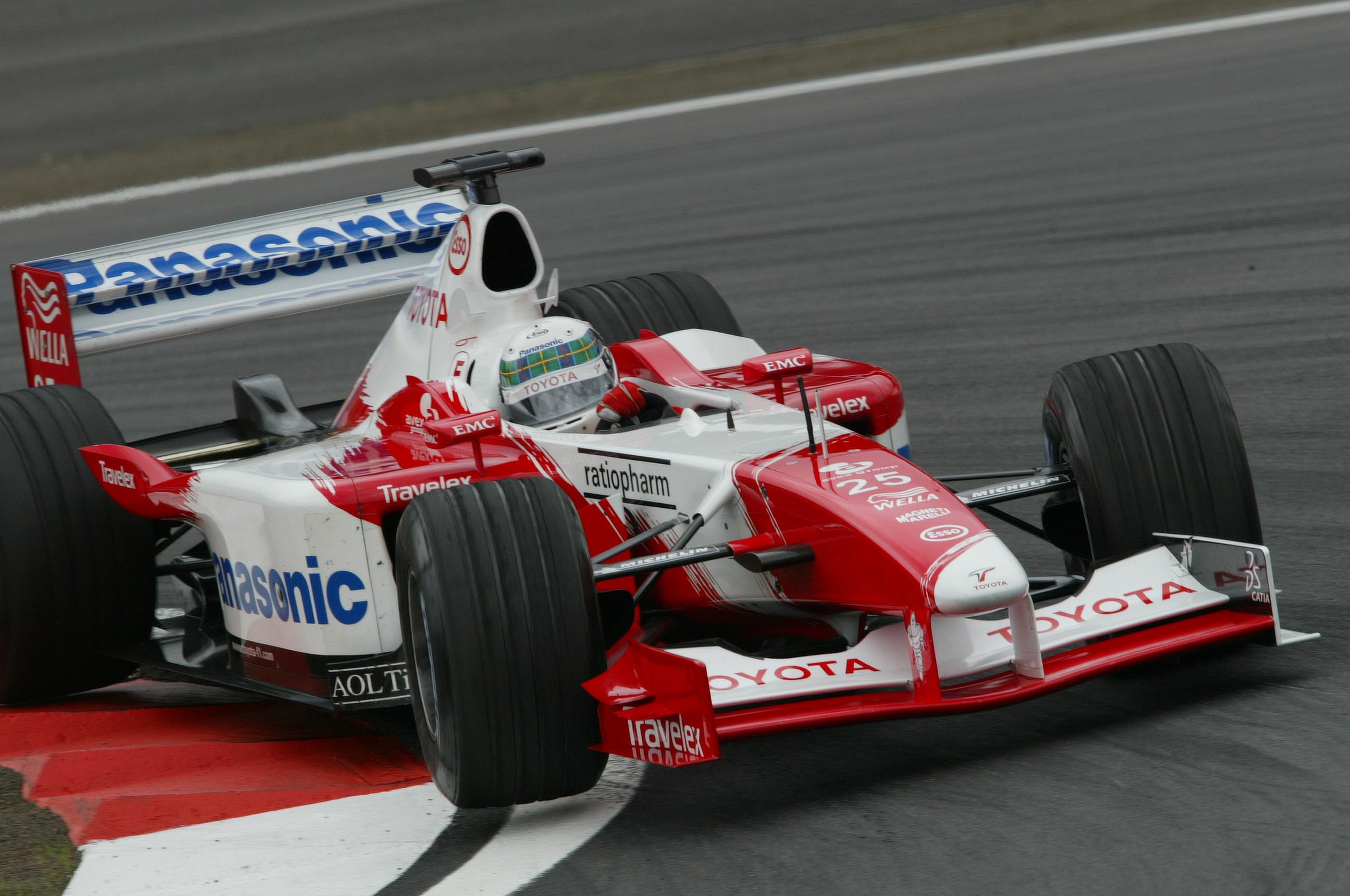Up Next

When you are running a Formula 1 team, or any business for that matter, you need to set up a clear management structure.
There are different ways to organise this, but if you do it right everyone knows what they are responsible for and who they ultimately answer to.
The Alfa Romeo team is going through some major changes. The Alfa Romeo deal concludes at the end of 2023 and Audi has already bought 25% of the Sauber team, a stake that will grow to majority ownership by the time it becomes the works Audi team in 2026.
With Frederic Vasseur leaving his role as team principal to join Ferrari and Andreas Seidl joining from McLaren as Sauber Group CEO, there were also big personnel changes over the winter. As part of this, Sauber has appointed Alessandro Alunni Bravi as what it calls ‘team representative’.

He spoke in that capacity at the team’s 2023 launch, with Seidl watching on from the audience. I’m not entirely sure what is happening there, but here’s how he explained it.
“There is not only one structure for the Formula 1 team, so we decided to split the functions between the different people, different profiles on-track and off-track,” said Bravi.
“I will be the team representative, meaning that I will work, together with Xevi Pujolar, our head of track engineering, together with Beat Zehnder, sporting director. I will relieve functions from them, I will represent the team with FIA, Formula 1, sponsors. We will work as a team.
“First of all, you have always to learn. It will be a new role for me in addition to my position as a managing director and of course I don’t have the experience, [or] competence of other team principal or team representatives.”
That’s as clear as mud, so they need to have explained it more explicitly internally so everyone understands how it works.
It does seem that Bravi is primarily there to be the designated person called on by the FIA for press conferences and to put up in front of a camera more often. But it also seems he will be wading into one of F1’s most difficult battlegrounds – the politics between the teams, the FIA and Liberty Media.
A meeting of the F1 team principals is not called the Piranha Club for nothing, so if he is going to represent the team he needs the authority and to be able to use that authority or he will very easily be overpowered by the other, more experienced, bosses. They are a cutthroat bunch and if any of them puts an arm around your shoulder, the first thing you need to check is how long the blade on the knife is.
The impression I get is that Sauber is setting up too flat a structure. Bravi admitted to having little experience in his role, but within the company you must have clearly-defined responsibilities and outside of it the authority to make decisions for the company.
On top of that, he failed to mention technical director Jan Monchaux as part of the group that shares the leadership. In my opinion, he is Sauber’s most important asset (what else would you expect me to say as an ex-technical director?). But he also didn’t mention the financial or commercial directors, who are also critical to the efficient running of any organisation, doubly so since the cost cap was introduced.
There are many ways to run a company, but in F1 I don’t think you have to look much further than the two most successful teams over the last decade – Red Bull and Mercedes – for the template. You can even go further back to when Ferrari ruled the roost in the early 2000s. Everyone had clearly-defined roles and the success speaks for the efficiency of those structures. No one within any of those three teams struggled to know who they worked for and reported to.
If I was Seidl, I would be pushing for a structure that is something like this:

That doesn’t leave much space in this structure for Bravi, who also holds the role of managing director. Sometimes it’s better not to have someone there rather than someone filling a position they are not qualified to be in.
In any business, you need to be capable of making decisions when required. Even if that means making the wrong decision, it means that the rest of the organisation is still in motion as opposed to standing still waiting to see which way to turn.
We all know that over the next couple of seasons, Audi personnel will start to infiltrate Sauber. Audi has had a huge amount of success in whatever category of motorsport it has been involved in, so perhaps Sauber is simply leaving that team principal role vacant ahead of someone from Audi taking the job? Perhaps even ex-Toyota F1 driver turned Audi sportscar star and Formula E team boss Allan McNish. From his Toyota experience he has first-hand experience of how not to do it in F1.

It might be therefore that Bravi is little more than a placeholder for the final year of the Alfa Romeo sponsorship deal before the team can start to more obviously become Audi. He can act as a public face for the team while doing his usual job as managing director of Sauber while Seidl deals with the leadership and politics. If that’s the case, provided it’s all clear then that is workable.
But if it looks confusing from the outside, there’s the risk it is also internally confusing. If the intention is for this structure to continue in the long term, it seems overly-complicated for a team that’s growing and needs to ensure it’s well-structured to make the most of being Audi-owned.




